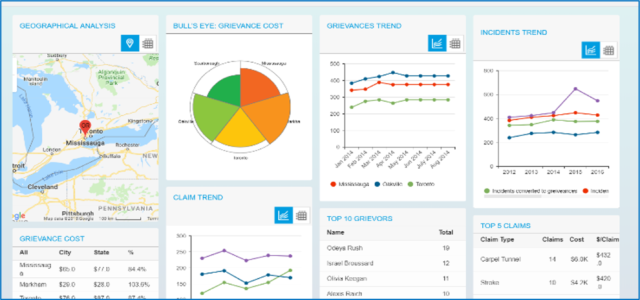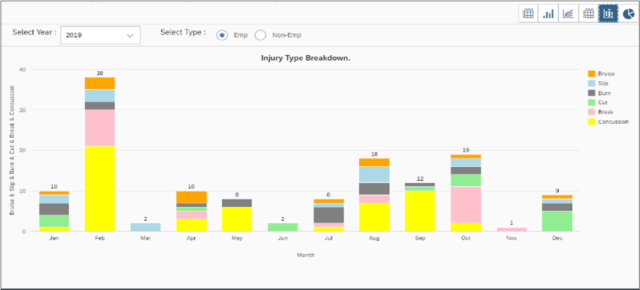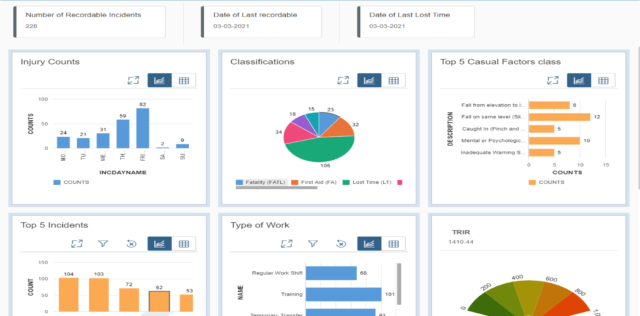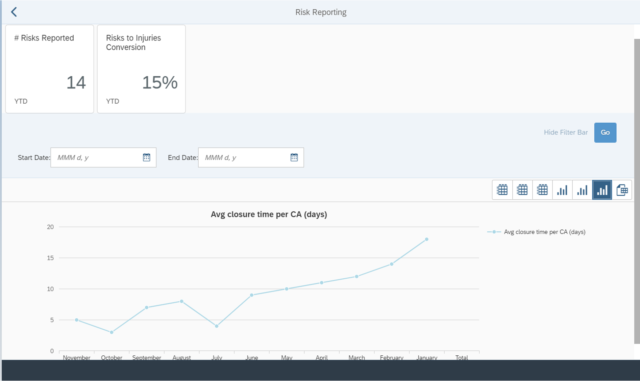


Data has become a staple in measuring an organization’s performance, from productivity to profitability. However, metrics can also become a mindset, leading to a narrow focus on hitting targets and ignoring the bigger picture. This is particularly true when data is not fully understood. In this blog post, we will discuss how metrics, when used appropriately, can play a critical role in proactive decision-making in labor relations and health and safety environments within organizations. By understanding data limitations and how to use them effectively, organizations can ensure that they are making informed decisions that benefit both the company and its employees. From reducing workplace accidents to improving employee satisfaction, metrics can provide valuable insights that aid in creating a safe and healthy work environment.
When an organization or individual has a metrics mindset, it means that their decisions and actions are driven by the desire to meet or exceed specific key performance indicators (KPIs) using data. With studies suggesting that over half of Americans rely on their gut instincts, it’s safe to assume that intuition plays a significant role in decision-making. While intuition can be a useful tool, it should be used as a starting point and used in conjunction with data to verify and quantify decisions. Organizations that prioritize data-driven mindsets are three times more likely to report improvements compared to those that do not. For this reason, it is important to maintain a balance between intuition and incorporating a metrics mindset. In doing so, fewer decisions are made based on personal bias and limited knowledge.
Adopting a metrics mindset can have several benefits such as boosting confidence in decision-making. When data is used as a benchmark it decreases subjectivity, which in turn can provide valuable insight into the impact of decisions being made. Additionally, metrics can be utilized to identify trends and patterns. By detecting patterns, organizations can use this as a preventative approach to handling workplace situations in departments like health, safety, and labor relations.
Businesses can drive quality outcomes with trust and transparency metrics. With Sodales Solutions, an enterprise health, safety, and labor relations software, companies can track these metrics to provide clarity, reduce noise, and establish equal opportunities across multiple departments. For example, if a health and safety team is neglecting to address employee complaints and grievances, employees will be reluctant to file claims because they do not feel like they are receiving equal opportunities or a fair chance to give input. This may also be a sign that certain KPIs like employee turnover rates and absenteeism are misreported. Moreover, this could mean that underlying issues that employees are facing, such as discrimination, harassment, or other forms of mistreatment are also being overlooked. By utilizing Sodales’ software, you will have a more accurate representation of employee concerns to manage grievances faster. Sodales’ labor relations module offers anonymous reporting, which allows employees to feel safer to come forward and make claims while still being able to trace them.


Another important metric for organizations to consider is transparency. Some metrics that can be tracked to measure transparency are near misses, injury rates, training progress, and environmental damages. One way organizations can measure transparency is by tracking metrics for injury rates which in turn allows employers to track workplace incidents. Using Sodales’ health and safety modules, organizations can identify areas of improvement over a period of time while monitoring ongoing progress. Tracking near misses allows employers to note what incidents could have resulted in harm but were prevented. In this situation, historical data is a valuable insight for establishing preventable measures and promoting first-end transparency.

 As for training, tracking this critical metric allows both labor relations and safety departments to monitor compliance and ensure that all employees have the skills and knowledge to perform their tasks safely, as well as note if overall training performed is successful. Using Sodales, organizations have been able to proactively identify and address risks, and track progress toward continuous improvement to create a healthier and safer workplace.
As for training, tracking this critical metric allows both labor relations and safety departments to monitor compliance and ensure that all employees have the skills and knowledge to perform their tasks safely, as well as note if overall training performed is successful. Using Sodales, organizations have been able to proactively identify and address risks, and track progress toward continuous improvement to create a healthier and safer workplace.
With a growing demand for metrics and reporting, embracing a metrics mindset is the way of the future with the ability to use data to inform decision-making is increasingly becoming a must-have skill for organizations of all sizes. Data collection and analysis have been critical to corporations for a long time. In today’s world, more than 2.5 quintillion bytes of data are produced daily, which means that it’s significantly become easier for businesses to gather, analyze, and transform data into meaningful insights that drive proactive action. If your organization is looking to shift health, safety, and labor relations from reactive to proactive and preventative approaches– request a demo of Sodales for Enterprise Health, Safety and Employee Relations to learn how.